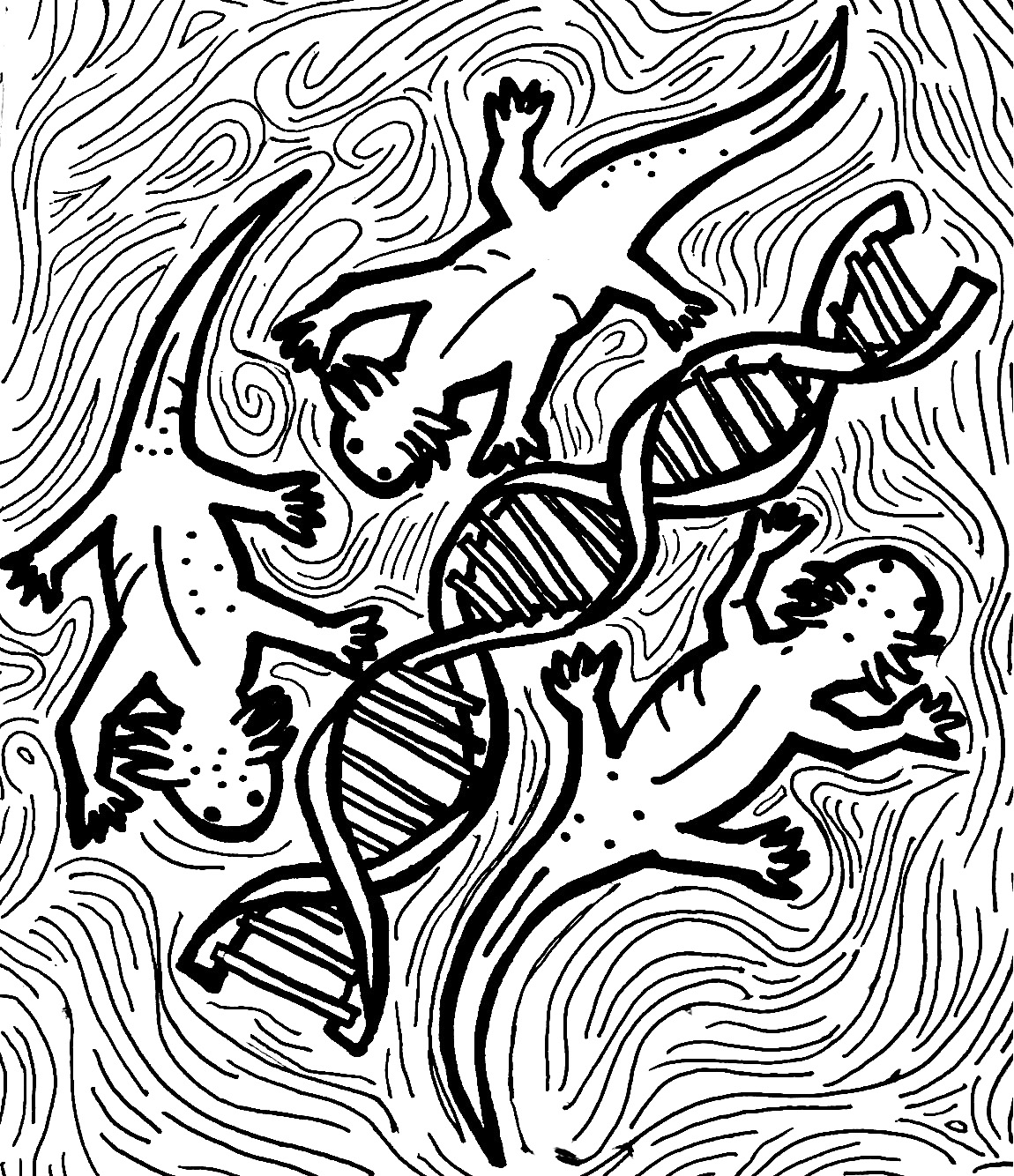
Using a new technique, Yale researchers gained insight into the process of limb regeneration and came one step closer to applying such regenerative strategies to humans.
Researchers in the Department of Molecular, Cellular and Developmental Biology released a paper on Sept. 16 in eLife that looked at how axolotls, a type of salamander, are able to regenerate almost any part of their body after injury. Specifically, the researchers wanted to see how axolotls’ regenerated limbs might differ genetically from their original ones. The study, which came from the lab of professor Craig Crews, was later highlighted in the science journal Nature on Sept. 26.
“We found that the regenerated limbs are really almost perfect copies of the original ones, not only in the way that they look but also in the fact that all the cells in the regenerated limb come from the same sources that made the original limb,” the study’s first author and MCDB post-doctoral fellow Parker Flowers said.
The study used a CRISPR-Cas9 system — a technique with which researchers can precisely manipulate genetic material contained in cells — to track the genes that participate in the growth and development of tissues or limbs. The Yale researchers were able to show, for the first time, that the regenerated limbs were similar to their originals, even after several regeneration cycles.
A few hours after amputating an axolotl’s limb, the researchers noted its skin had grown over and the cells under the wound site had begun to divide. Scientists have previously shown that axolotls will regrow an arm and look as if nothing happened, but the Yale researchers showed that genetically, this similarity holds true as well. After a few months, the regenerated limb is almost indistinguishable from other limbs.
Flowers said he was drawn to the Crews Laboratory out of a desire to study mutant salamanders. After he spent several months designing a system to manipulate DNA, he published one of the first papers to apply CRISPR technology to axolotls.
The CRISPR gene-editing technique, first employed in 2012, has allowed researchers to edit genomes with an ease never imagined before.
“A few years ago, the idea that you could change a specific DNA sequence of an animal outside of very specific species would be almost impossible,” Flowers said. “CRISPR is both really inexpensive and easy.”
Others in the Yale community, while equally optimistic about the future of CRISPR, shared some skepticism. Timothy Nottoli, the co-director of the Yale Genome Editing Center, which uses CRISPR to genetically modify mice for study, said the technique can be inefficient.
“CRISPR doesn’t make the changes you need in every cell you need,” he said, adding that the key difference between using CRISPR for research and using it for patient therapy is that researchers can afford a 5 percent success rate while patients cannot.
But Flowers said the team’s research could help inform potential uses of the technique in human therapies.
“The fact there are these examples in nature of almost perfect regeneration indicate that it is technically possible to regenerate in humans,” he said. “One of the next steps is finding out why the process of regeneration stops in humans but not in axolotls.”
The recent publication and subsequent coverage in Nature was one of a long line of successes for the Crews Lab, said MCDB professor Scott Holley. The lab, which has also developed a cancer treatment drug called Kyprolis, is one of the “cornerstones of the department,” he said.
According to Flowers, salamanders are the only vertebrates that can fully regenerate limbs as adults.
Correction, Oct. 10: A previous version of this story incorrectly stated that Parker Flowers was a professor when in fact he is a post-doctoral fellow. It also incorrectly stated that the Crews Laboratory published the first paper to apply CRISPR technology to animals besides mice when in fact it was the first paper to do so in axolotls.
Skakel McCooey | skakel.mccooey@yale.edu







